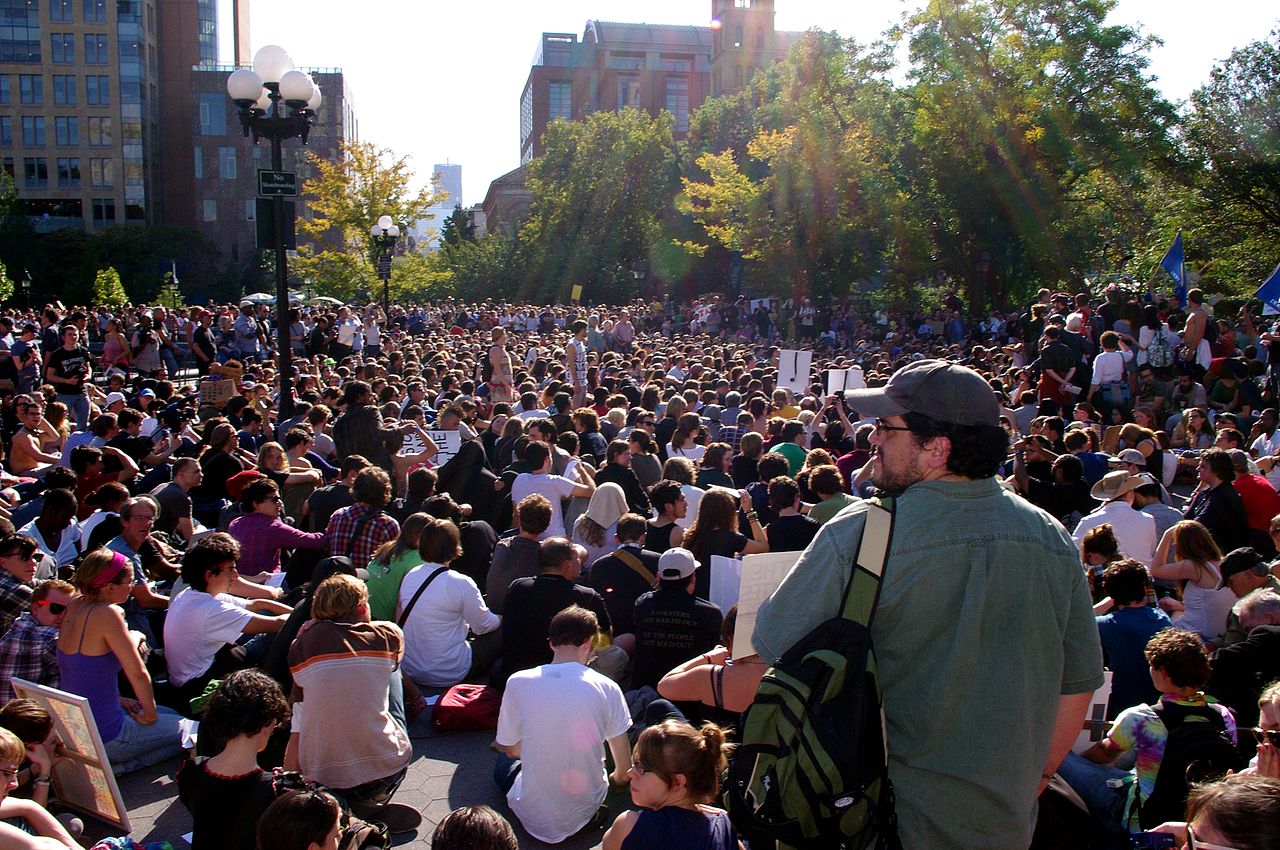< previous page | home page | next page >
Mass mobilization as a tactic–without linking it to community organizing, base-building, and civic engagement–has some very useful aspects and also some steep downsides. The Occupy Wall Street (OWS) Movement and the Black Lives Matter movement illustrate the pluses and minuses of such an approach to social change.
OWS was able to mobilize tens of millions of people across the globe to challenge the 1% and to proclaim, “We are the 99%.” It laid out in stark detail how a few billionaires dominate the world economy to the detriment of most of the people on the planet. It challenged the dominant narratives that wealth inequality is just the way the world works and there’s nothing you can do about it, and that it’s okay to have people who are super rich because they create jobs. The movement popularized a counter narrative that received widespread coverage in the mass media and on social media, a narrative that called for the democratization of the global economy. OWS maximized the number of people that were mobilized and built momentum for policy change.
However, the win was defined by the public disruption and consciousness raising. OWS was not able to sustain its base because it did not have a community-organizing orientation. Another downside of such a mobilization-only approach is that movement leaders did not link to a clear strategy and specific demands to challenge the power of the super rich and multinational corporations.

However, the momentum led to other movement leaders creating change by negotiating behind the scenes from a new position of strength. New organizations joined the cause and there was a new willingness to come together across organizational differences. But it was left up to individual organizations and networks to fashion strategies and demands. The result was a hodgepodge of strategies and demands.
Another challenge in the OWS mass mobilization model and similar efforts is that they do not distinguish the many fissures and breaks within the “99%.” The simple promotion of the identity as the 99% presents no analysis of the class, race, and gender dynamics and stratifications in society, and the way that these reproduce in social movements. While there was a message that the 99% was being “othered,” the mass-mobilization approach lacked structures or processes for bringing people into a deeper shared identity across differences and a shared strategic outlook. That is, there was no recognition of the necessity to bridge in an intentional way.
This same element of mass mobilization as a tactic is also evident in the Black Lives Matter movement. The power of this movement was phenomenal because of what it was capable of doing in such a short period of time. Its strengths include its racial-justice analysis, its attractiveness to young people, its deft utilization of social media, and its ability to mobilize thousands, and in the aftermath of George Floyd’s murder by police, millions of people worldwide almost instantly.
However, the movement against anti-Black police violence, calling to “defund the police, invest in community,” is running counter to the movement in Black communities calling for more police protection from violence within the community. The lack of an inclusive, long-term strategy has caused a somewhat antagonistic relationship between organizations and between people with these different but complementary agendas. Live Free California and Empowerment Initiative are engaged in a statewide initiative in California to bring groups together to bridge their narrative and organizing strategies. The objective is to align the organizations around a common analysis of the root causes of both issues and to create synergy that can increase the effectiveness of the mass mobilization tactic.
These are powerful lessons about how new developments in social movements can create opportunities for power building and bridging across class and race lines and within communities.
Thumbnail photograph for this paper is by David Shankbone.

